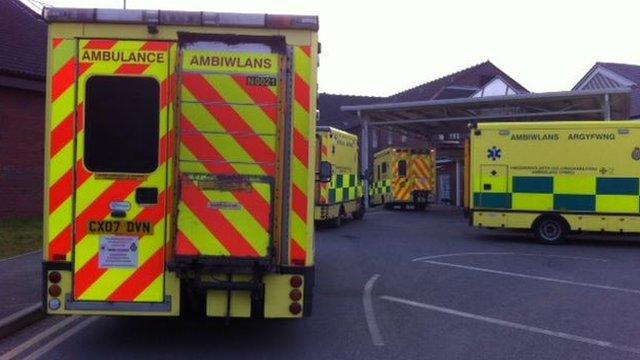New colour-coded 999 ambulance call system starts
- Published
Deputy health minister Vaughan Gething AM and Andrew Jenkins of the Welsh Ambulance Service explain why the changes are being made
A new system for dealing with 999 calls for ambulances in Wales has come into force.
Emergency response time targets will be scrapped for all but life-threatening cases during a one-year trial.
Calls will now be graded and it is estimated 10% of the 420,000 ambulance emergencies a year will be coded "red" for the most critical.
Welsh Ambulance Service chief executive Tracy Myhill said the new system was based on clinical evidence.
"These changes are about putting our sickest patients first," she added.
Meeting the targets has been a long term problem for the Welsh Ambulance Service.
The latest figures out on Wednesday, external showed a drop in performance after seven successive months of improvement.
In August, 58.8% of emergency responses to life-threatening category A calls arrived within eight minutes - below the 65% target and down from 61.7% in July.
Managers argue the current against-the-clock system can lead to two vehicles - a rapid response team followed by an ambulance - going to what often turns out to be a less critical case.
But as soon as it is clear a case is life-threatening, an emergency vehicle will be sent.

HOW EMERGENCY CALLS WILL NOW BE GRADED

Voice recognition software which identifies key words will be used to help screen calls and identify critical cases.
But when it is unclear how serious a call is, control centre staff will have extra time - up to two minutes - to judge how to respond.
Paramedic and nursing expertise will also be available over the phone.
Until now, about 40% of 999 calls have been classed as life-threatening and categorised Red 1 and Red 2 - the former being the most critical, such as heart attacks and where the patient has stopped breathing.
In future, under the traffic light system, the trust estimates 65% of 999 calls will fall under "amber" which may still see ambulances dispatched, but not against the clock.
However, managers say the quality of patient care, including the outcomes, will still be measured in quarterly figures.
Another 25% are expected to be graded "green" and could end up being dealt with by GPs or NHS Direct instead.

Opposition parties have accused the Welsh government of political expediency by changing targets, which follows a review into the under-performing service, external two years ago by a health economist.
Plaid Cymru called the trial a "dangerous experiment".
But the Welsh Ambulance Services NHS Trust said the new way of working would make it "one of the most progressive in the world."

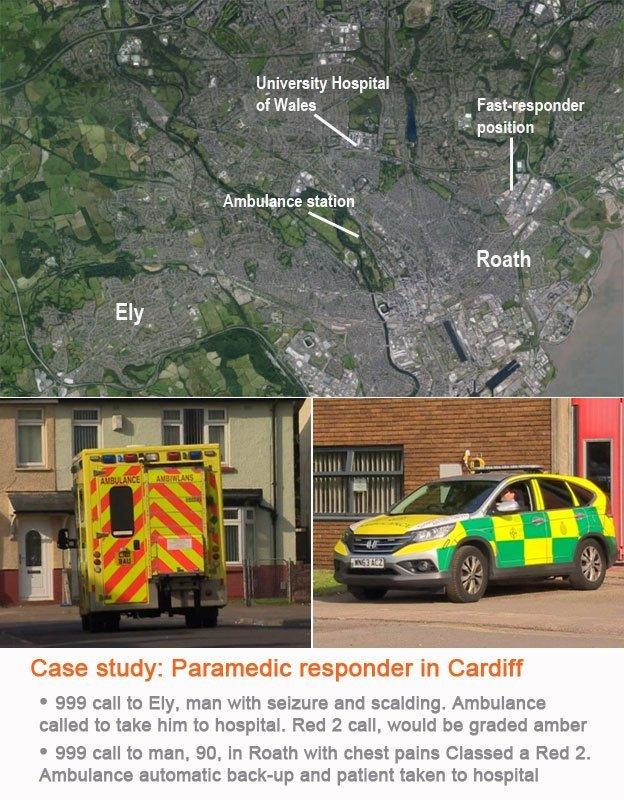
BBC News app users can tap here, external to view videos.
BBC Wales health correspondent Owain Clarke went on the road with paramedic Geoff Lane, attending two 999 calls in Cardiff.
In both cases, Mr Lane said the speed of response would not have made much difference to what eventually happened to the patients.
His first call is to Dennis, in Ely, who had an epileptic seizure and was scalded by water from a kettle. He gives pain relief and decides Dennis needs an ambulance, which follows within 20 minutes.
"Getting here in eight minutes, has it done him any extra favours? No," said Mr Lane.
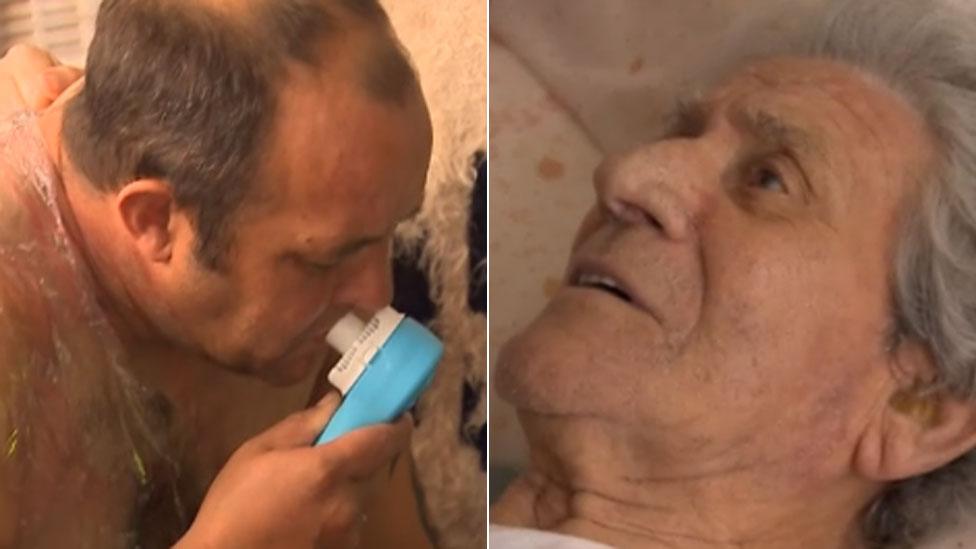
Patients Dennis and Ken - both were taken to hospital by ambulance but a paramedic was called out to them first
He then waits in Roath where he receives the next call to a 90-year-old man with chest pains.
It's a "bread and butter" case. Ken has a history of heart attacks and strokes and his carer called Ken's son Wayne who dialled 999 after struggling to get through to a GP.
"In all fairness a lot of people try and get frustrated," said Geoff.
"The gentleman had been in some distress, with pain and difficulty breathing but did us getting there in eight minutes make a difference to the way he was treated? No."

Dr Brendan Lloyd, ambulance service medical director, said: "Since 1974 our ambulance service has been measured by the time it takes to reach emergency calls.
"Para-medicine and pre-hospital care has developed rapidly since then, but the focus is still on how many ambulances arrive at calls within eight minutes regardless of the clinical outcome.
"That's why we're moving away from time-based targets to look more at the quality of what we do for our patients once we arrive."

- Published1 October 2015

- Published1 October 2015
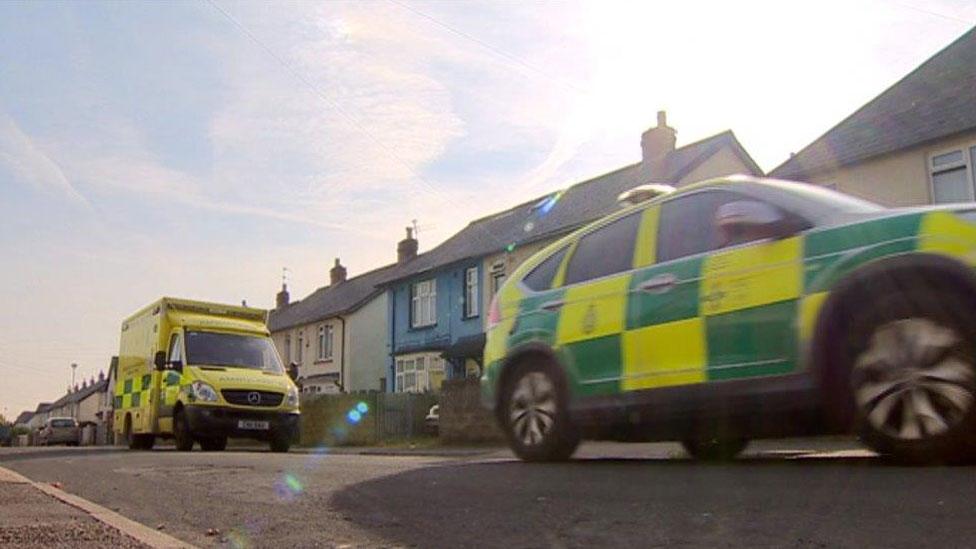
- Published30 September 2015
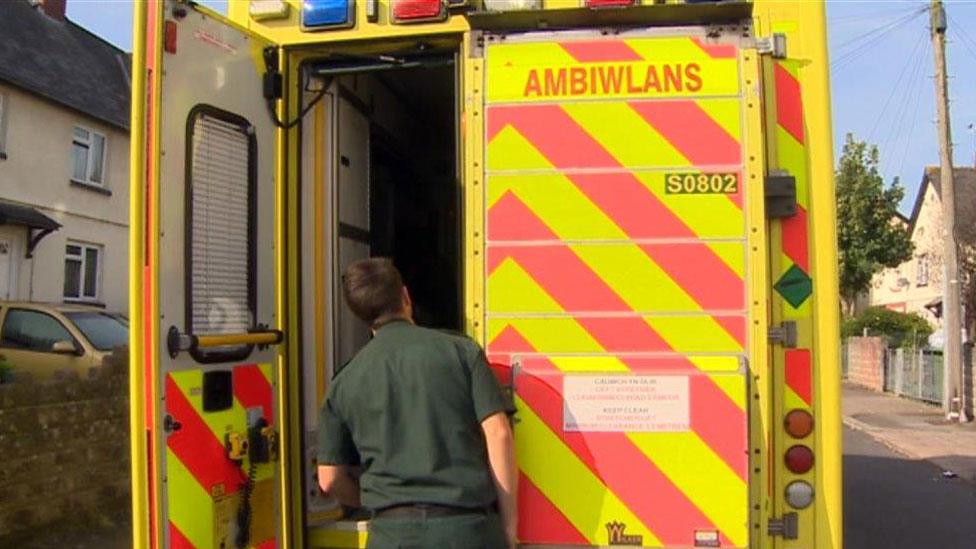
- Published29 July 2015
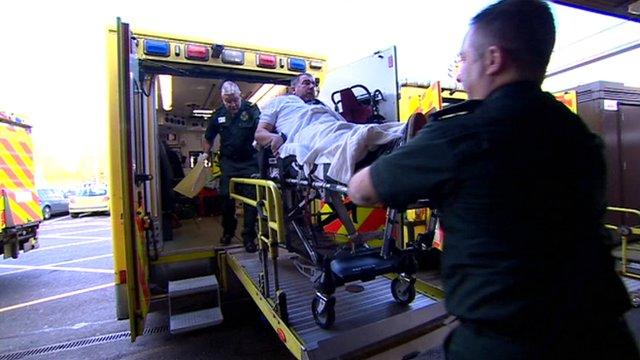
- Published15 September 2015
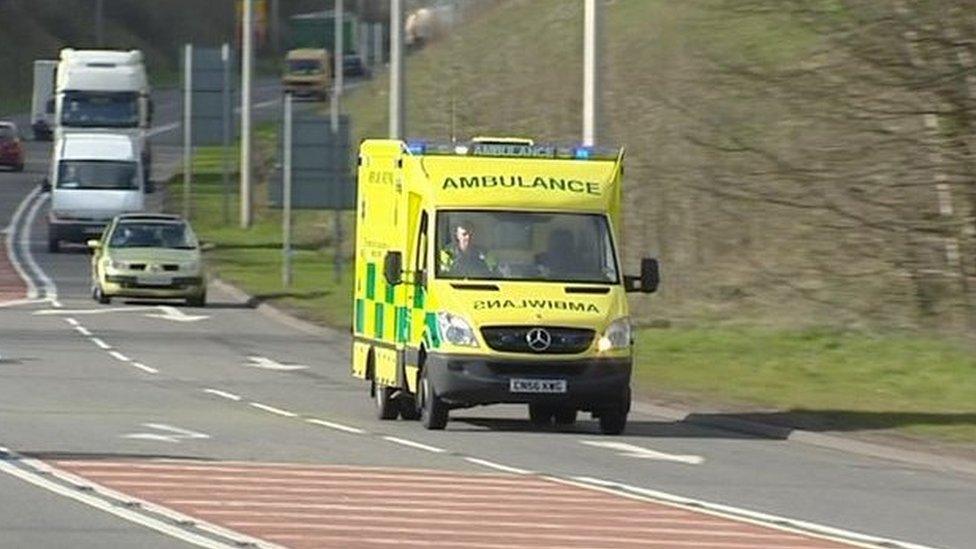
- Published30 April 2013
